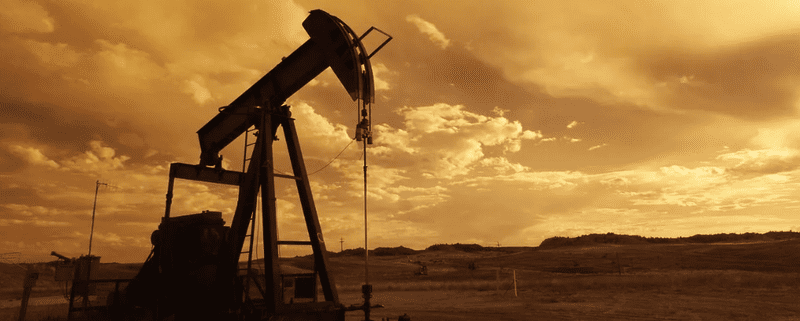Shale Boom 2.0: What it means for overriding royalty interests
The development of unconventional resources like shale oil and natural gas has led the energy industry to see significant transformation over the past few decades, resulting in what is often referred to as the “Shale Boom.” This revolution has reshaped the global energy market, with the U.S. emerging as one of the largest producers of oil and gas, largely due to the hydraulic fracturing (fracking) and horizontal drilling techniques that allow companies to extract energy from shale formations. Now, as new technological advances, shifting market conditions, and evolving regulatory environments continue to shape the industry, the concept of “Shale Boom 2.0” is gaining traction.
Shale Boom 2.0 refers to the next phase of the shale revolution, which focuses on improving the efficiency, sustainability, and profitability of shale production.
As the industry moves toward this new phase, stakeholders, including landowners, investors, and energy companies, are poised to approach oil and gas investments significantly influenced by overriding royalty interests (ORIs).
Overriding royalty interests, which are a type of non-operating interest in oil and gas leases, provide a share of production revenues to the interest holder without bearing the associated costs of production. These interests have become an increasingly important tool for landowners and investors in the shale industry, particularly as the shale boom continues to evolve. As the industry enters this new phase, understanding the dynamics of Shale Boom 2.0 and its impact on overriding royalty interests is crucial for those seeking to maximize their returns in the shale market.
The Evolution of the Shale Industry and the Concept of Shale Boom 2.0
To understand the significance of Shale Boom 2.0, it’s essential to take a step back and examine the history and evolution of the shale industry. The original shale boom, which began in the early 2000s, was driven by significant technological advances in horizontal drilling and hydraulic fracturing, or “fracking.” These technologies allowed oil and gas companies to access previously unreachable shale deposits, leading to a dramatic increase in domestic production, particularly in regions like the Permian Basin, Bakken, and Eagle Ford.
The initial boom saw companies rushing to lease large swaths of land, drilling wells at a rapid pace to capitalize on rising oil prices and increased production. Over time, however, the industry faced several challenges, including fluctuating commodity prices, concerns about the environmental impact of fracking, and the need for more efficient extraction techniques.
Shale Boom 2.0 marks a shift in how the industry approaches these challenges. Rather than focusing solely on increasing production, companies are now prioritizing efficiency, cost management, and sustainability. This new phase emphasizes:
- Technological Innovation: Advances in drilling and production technologies are improving the productivity of wells, reducing costs, and minimizing environmental impact. Companies are investing in data analytics, automation, and artificial intelligence to optimize operations and maximize output.
- Consolidation and Cost Efficiency: As the industry matures, consolidation among oil and gas producers has become more common. Smaller companies are merging with larger ones, and there is a stronger focus on reducing operational costs and improving margins.
- Environmental Sustainability: Environmental concerns have become more pronounced, with a growing emphasis on reducing methane emissions, water usage, and the overall environmental footprint of shale operations. Companies are adopting cleaner technologies and focusing on regulatory compliance to address these concerns.
- Stronger Capital Discipline: Investors and companies alike are increasingly focused on capital discipline, meaning they are more selective about where they allocate capital and how they prioritize drilling activities. This has led to a more disciplined approach to drilling, with an emphasis on high-return projects and longer-term profitability.
This shift toward a more sustainable, efficient, and disciplined approach in the shale industry is what defines Shale Boom 2.0. The changes in how companies operate and invest will have a direct impact on overriding royalty interests and the financial opportunities available to landowners and investors.
What Are Overriding Royalty Interests?
To understand how Shale Boom 2.0 will impact overriding royalty interests (ORIs), it’s important to first define what these interests are and how they function within the oil and gas industry. Overriding royalty interests are a type of non-operating interest in an oil and gas lease, typically created as a percentage of the gross production revenue.
The holder of an ORI receives a portion of the revenue generated from the extraction of oil and gas from a lease, but does not bear the costs associated with drilling, production, or operation. Companies often carve out overriding royalty interests from the mineral rights when they execute a lease. Typically, the leaseholder, whether a landowner or a mineral rights holder, may negotiate with an operator (an oil and gas company) to receive a percentage of production revenue as an overriding royalty interest. These interests are particularly attractive to investors and landowners because they provide a passive income stream without the financial burden of covering production costs.
One of the key benefits of ORIs is that they are generally paid before any other expenses or royalties, meaning the interest holder receives their share of the revenue before the operator and other stakeholders. This makes ORIs an appealing investment, especially in a market where oil and gas prices are volatile. Additionally, as an interest in production revenue rather than ownership of the minerals themselves, ORIs do not carry the same level of risk as direct ownership of mineral rights.
The Role of Overriding Royalty Interests in Shale Boom 2.0
Shale Boom 2.0 is expected to have a significant impact on the market for overriding royalty interests, particularly as the industry evolves toward a more efficient and sustainable model. Several key factors will shape the role of ORIs in this new phase of the shale industry.
-
Improved Well Economics
As shale companies adopt new technologies and improve efficiency, the overall economics of shale production are becoming more favorable. More efficient drilling techniques, coupled with enhanced recovery methods, mean that wells are becoming more productive and less expensive to operate. For ORI holders, this means a greater likelihood of sustained and potentially increasing production levels, which in turn boosts the revenue generated by the overriding royalties. Investors who hold ORIs may see more consistent cash flows as operators become better at managing costs and optimizing production.
-
Capital Discipline and Cost Control
Shale Boom 2.0 has placed a premium on capital discipline, with companies becoming more selective about their drilling activities. As operators focus on high-return projects and leaner operations, the importance of securing advantageous leases becomes more pronounced. Overriding royalty interests can provide a more predictable and stable revenue stream compared to other forms of investment, making them an attractive option for investors seeking long-term cash flow in a capital-efficient industry.
-
Asset Longevity and Depletion
While the initial shale boom was marked by a rush to drill and maximize production, many shale wells experience rapid production decline after the initial few years. As the industry moves into Shale Boom 2.0, there is a greater focus on extending the lifespan of wells through advanced technologies and better reservoir management. This is positive for ORI holders, as extended production timelines can lead to longer periods of revenue generation. The ability to keep wells in production for extended periods makes ORIs more valuable over time, providing investors with more sustained income.
-
Environmental Regulations and Sustainability
With the growing emphasis on sustainability and reducing the environmental impact of shale operations, operators are under increasing pressure to comply with stricter regulations. This has led to innovations in technology, including improvements in methane capture, water management, and waste disposal. These innovations can affect the economics of production, as more sustainable practices can help reduce the cost of compliance and mitigate risks.
Companies that are better positioned to navigate regulatory challenges may offer more stable and secure long-term revenue streams for ORI holders, increasing the attractiveness of ORIs as an investment.
- Landowner and Investor Opportunities: For landowners and investors, Shale Boom 2.0 offers new opportunities to monetize mineral rights through the strategic sale or lease of overriding royalty interests. With an industry that is becoming more disciplined and focused on long-term profitability, landowners and investors can take advantage of favorable market conditions to negotiate more favorable terms for their ORIs. Additionally, as shale operations become more efficient, the revenue potential from ORIs may become more predictable, making them an even more appealing investment.
Challenges and Risks for Overriding Royalty Interest Holders
While Shale Boom 2.0 presents several opportunities for ORI holders, they must also consider the risks and challenges. As the industry matures and companies focus on cost efficiency, ORI holders may face:
- Price Volatility: Despite improvements in efficiency, oil and gas prices remain inherently volatile, influenced by global supply-demand dynamics, geopolitical tensions, and broader economic factors. Price fluctuations can have a direct impact on the revenue generated by ORIs, with lower prices potentially reducing the cash flow from production.
- Depletion of Resources: Shale wells often experience rapid depletion rates, and while new technologies are extending well lifespans, operators may still face challenges in maintaining production levels.If a well is depleted faster than anticipated, ORI holders may experience a decline in revenue from that well, which could affect their overall performance.
- Environmental and Regulatory Risks: The evolving regulatory landscape presents both opportunities and challenges for ORI holders. Stricter environmental regulations may increase operational costs for operators, potentially reducing the revenue available for royalty payments. Furthermore, new laws or changes to existing policies could impact the viability of certain shale plays, affecting production and, ultimately, royalty revenue.
In Conclusion
Shale Boom 2.0 represents a new phase that the shale industry has entered, marked by greater efficiency, sustainability, and capital discipline.For overriding royalty interest holders, this shift brings both opportunities and risks. As shale production becomes more profitable and efficient, ORIs are likely to offer more consistent and potentially increasing revenue streams. When evaluating the long-term value of these interests, we must still consider volatility in commodity prices, resource depletion, and environmental regulations.
For landowners and investors in the shale sector, understanding the dynamics of Shale Boom 2.0 and how it influences the value and performance of overriding royalty interests is essential to making informed decisions. As the industry continues to mature, ORIs will remain a critical tool for accessing the financial benefits of shale production, and those who can effectively navigate the changing landscape stand to benefit from a stable and potentially profitable source of income.
If you have further questions related to Shale Boom 2.0, contact us here.






Leave a Reply
Want to join the discussion?Feel free to contribute!